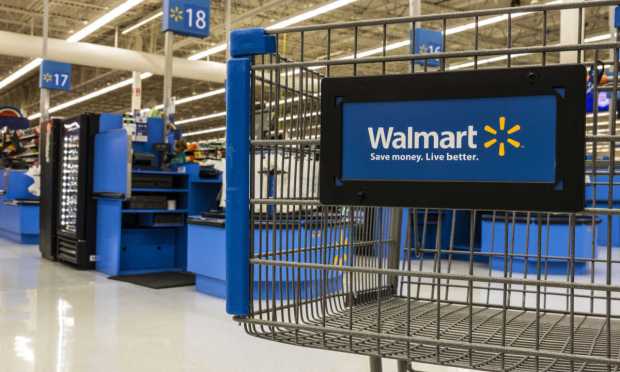Walmart Touts Low-Cost Basics as Amazon Flaunts Sales and Tech Upgrades

After a week of rolling out more than a dozen device advancements, smart home technology upgrades and new out-of-the-box connected gadgets, Amazon SVP of Devices and Services Dave Limp wrapped the annual product event like this:
“We invent around a simple premise: the real-world matters to customers,” Limp said in his parting comments, adding that his team works hard to build things “that solve problems behind-the-scenes—so our customers can focus on the here and now.”
Without casting any judgment on the range of digital advances that Amazon has just unveiled ahead of its upcoming and newly minted “Prime Early Access Sale,” reasonable minds could easily disagree on the current status of the real-world issues in the here and now that matter most to consumers.
While the latest iteration of Amazon’s Echo Show 15 voice-activated shopping and entertainment system that doubles as a whole-house digital valet will certainly appeal to some tech-minded consumers and has clearly advanced the state of play surrounding voice commerce, its $250+ price tag might be seen as off limits to the 70% of consumers that PYMNTS recently found had reduced discretionary retail spending in favor of essentials.
What’s interesting is that the world — and Amazon — will get a real-time feedback on consumers’ appetite for reduced priced digital devices in less than two weeks when the eCommerce giant’s new fall sales event kicks off Oct. 11 through 12 in 15 different countries.
Groceries vs Gadgets
For its part, this is all good news for Walmart, which still dominates the grocery industry and outpaces Amazon by a 10 to 1 margin. As much as headline inflation has slipped to 8.1% from a peak of 9.3% in June on the back of falling gasoline prices, the food component of that index continues to deliver outsized price increases, especially within the food eaten at home or grocery category.
In fact, new PYMNTS data showed that 9 in 10 Americans are still feeling the effects of high food prices and tailoring the behavior accordingly.
This is not to say that Walmart is completely playing defense while Amazon is fully on offense, but those general biases continue to have an acute impact on their respective stock prices, where the physical retail store leader’s shares are down 8% in 2022, compared to a 30% drop by the Seattle-based eCommerce and technology titan.
To be sure, Walmart is doing much more than pedaling groceries and staples and continues to make moves to broaden and deepen its digital presence and business. In fact, just Monday (Sept. 26) it announced its first-ever foray in the metaverse via a new pact with Roblox, in a deal it says is aimed at connecting with some of the 50 million consumers who visit the virtual world each day.
“Roblox is one of the fastest growing and largest platforms in the metaverse, and we know our customers are spending loads of time there,” William White, chief marketing officer at Walmart U.S., said in a company statement, adding that the retailer was focusing on creating new and innovative experiences that excite customers.
Like Amazon, the real-world response Walmart receives given the uncertainty of the here and now also remains to be seen.
For all PYMNTS retail coverage, subscribe to the daily Retail Newsletter.
